Oleh : Suci Humairah, MA (Dosen Jur. BSI)
 Srengenge is a novel written by a famous Malaysian writer, Shahnon Ahmad, and published by Dewan Bahasa dan Pustaka in 1973. This novel is a very interesting novel which is rich of traditional values and belief and then considered by many colleagues as his best work to date. As an appreciation, Srengenge won an important literary Prize in Malaysia; Malaysia’s Literary Prize panel declared it as the Malaysian Novel of the Year. In 1979, this novel is translated into English by Harry Aveling, an Australian literary translator who concerns much about Malay Literature and translation studies.
Srengenge is a novel written by a famous Malaysian writer, Shahnon Ahmad, and published by Dewan Bahasa dan Pustaka in 1973. This novel is a very interesting novel which is rich of traditional values and belief and then considered by many colleagues as his best work to date. As an appreciation, Srengenge won an important literary Prize in Malaysia; Malaysia’s Literary Prize panel declared it as the Malaysian Novel of the Year. In 1979, this novel is translated into English by Harry Aveling, an Australian literary translator who concerns much about Malay Literature and translation studies.Introduction
He has translated extensively some literary works from Malaysia. Therefore, in 1991, he has awarded “Anugerah Pengembangan Sastera” by the Federation of Malay Writers Association (GAPENA) for his contribution to the international recognition of Malay Literature.
The novel Srengenge narrates conflicts of values practiced by the members of Srengenge village, the villagers. It covers the myths, beliefs and traditions which control every aspect of rural life. It is told that those conflicts emerge among the characters of the story. They occur since there is a character, an outsider, who brings a dynamic and modern value dispute with the indigenous people who maintain traditions values and myths. To be brief, Srengenge was an effort to combine traditional belief and modern psychology.
Literary Translation Studies
Generally translation is not an easy activity. Translation activity does not only show the ability to transfer the meaning of a written text in one language into that in another language but also preserve the meaning, style, and effect of the source text, and at the same time respect the sentence syntactic (structure), lexical (vocabulary), and semantic (meaning) values of the target language.
In literary translation studies, it is mentioned that translating fiction is different from translating the common texts. Translation of fiction is much more complicated as it deals not only with bilingual but also bi-cultural and bi-social transference (Shen Dan, 1995). It shows us that the translator does not only concern about the languages, transferring the source language into the target language but also paying attention to the both culture and social senses involved.
Dealing with the opinion above the writer would like to have a comparative study of the two texts of the Srengenge; the original text and the translation. The writer will analyze whether the translator considers those aspects mentioned above when he was translating this novel or not. In this case, the writer will compare both the original text and its translation text from the aspects of meaning transfer, stylistic structure, cultural nuances, and literary devices.
Meaning Transfer
The main purpose of translation is to transfer the meaning of a written text in one language into that in another language. Translators should be able to identify as well as determine the equivalent meaning of the words in their translation. Besides they are expected to be able to arrange the words become good sentences so that the intended meaning in the original text could be kept well. Thus, they can produce the ideal translation. Larson (1991) states that the ideal translation will be accurate as to meaning and natural as to the receptor language forms used. It is expected that an intended audience who is unfamiliar with the source text will readily understand it. In this case, the success of a translation is measured by how closely it measures up to these ideals.
The writer has compared the translation of Srengenge with the original one and found some mistakes in translating the meaning of words and sentences. The translator did not come up with the real meanings intended by the writer of the story and sometimes did not take note of the context of the story. The examples can be seen in the following quotations:
Datum1
“Biar kayu-kayan diganti dengan kulat, jambak, pisang, jari buaya, pisang awak raja, labu kerambil, timun dendang lonjong, peria, ubi keling dan terung” (p.1)
“Replace the wood with mushrooms, rose-apples, crocodile-finger bananas, king’s body bananas, coconut trees, long cucumber, peria gourds, Indian yams and egg-plants.” (p.1)
It can be seen from the quotation above that the translator seems careless translating the word “pisang” and “jari buaya”. He did not realize that both are different. The writer of the novel essentially differentiates pisang and jari buaya by putting comma (,) between them. They are actually different kind of fruits. However, the translator considered jari buaya as a kind of “Banana”. In fact, if we refer to Kamus Dewan (2002: 520), jari buaya is “Trichosanthes wallichana” or herbal plants.
Besides, the translator translated labu, kerambil as coconut trees. By putting comma between labu and kerambil, the writer of the novel supposes to differentiate both of them. In another word, both are different things. However, the translator considered them as one thing and translated it into coconut trees. In fact, it will be better for the writer to translate both as gourd and coconut. Therefore, it seems clear that the translator did not propose the natural meaning intended by the writer and even transfer the different meaning.
Datum 2
“Sesungguh-sungguhnya Awang Cik Teh tidak pernah serik dalam apa-apapun. Serik hanya mendedahkan kekalahan;bukan kekalahan terhadap lawan seperti Diah atau Sidik. Tetapi kekalahan terhadap itu sendiri.” (p. 6)
“Nothing deterred Awang Cik Teh. To give up was to admit failure. Diah and Sidik couldn’t beat him. Only live could do that.” (p. 5)
It seems to the writer that the translator transferred the different meaning. The writer of the novel wrote that Awang Cik Teh will not give up to anything including live since giving up means failure. In fact the translator suggested that live could make him giving up.
Datum 3
“Rasa-rasanya Srengenge memang sengaja mencabarnya selama ini. Apakah Imam Hamad atau Siddik atau Diah atau orang lain tidak pernah merasai bukit bedebah itu mencabar mereka?Apakah anak-anaknya rela membiar bukit itu terus-menerus mencabarnya hingga mati? (p. 8)
“For years it had jeered at him. Hadn’t Imam Hamad or Siddik or Diah ever felt its challenge. Would their children let the hill sneer at them until they died?” (p. 7)
Here, the translator seems did not pay attention to the context shown by the original one so that he transferred different meaning. In the quotation above, the writer focused on the narrative of Awang Cik Teh, not others. The translation should related anak-anaknya to Awang Cik Teh’s children or his children not to children of others. If we pay attention to the context given, we would see that only Awang Cik Teh felt that Srengenge jeered him. Meanwhile, others do not. Then, it would be impossible for others’children let the hill sneered their fathers since they do not care at all to Srengenge.
Datum 4
“Imam Hamad sendiri sibuk dengan si Jebatnya. Kadang-kadang mahu rasanya dia bersabung dengan dengan si Didik Diah. Tetapi itu hanya satu kemahuan saja. Si didik bersisik tidak genap” (p.18)
“Imam Hamad was busy with Jebat. There were occasions when he wanted to match Jebat against Didik, Diah’s bird. He never told anyone. Didik’s feathers were not yet fully formed.
In the writer’s opinion, the translator should not translate the sentences as above. The idea given is meaningless. Here, the writer culturally brought the meaning that Didik, Diah’s bird is extraordinary bird. The birds usually has even numbers of scales such as 2, 4, etc. However, Didik is different. It has odd number such as 3 or 4. Based on the context furthermore we will understand that Imam Hamad did not allow Jebat against Didik not because Didik is too weak since its feather were not yet fully formed, instead Didik is too strong to be against.
Datum 5
“ Mana colok gondang si Jebat. Tercangak-cangak dia mencari bekas air untuk tekukurnya itu. Colok Gondang entah kemana”.
“He scurried around looking for some water for his bird. The pan had vanished”
Considering the context, the translator will not translate bekas air into some water. It is because the writer of the novel proposed the idea that Imam Hamad was not looking for some water but water-pan. It seems to the writer that the translator did not relate the words being translated to the words or the sentence around them when translating.
Datum 6
“Selalu juga dia terjerembap dengan Useng di Bukit Srengenge” (p. 20)
“He often saw Useng on Srengenge” (p.18)
It should be understood that the word saw did not represent at all the meaning of the word terjerembap. It is seen that the situation described by both the writer and the translator is quite different. The writer supposes that the translator is better to translate Siddik terjerembap into Siddik unexpectedly met with Useng on Srengenge. They actually saw each other, not only Siddik did that.
Datum 7
“Tak payah, mak haji. Kalau tak ada paku kita guna candung saya ini. (p. 121)
“Don’t bother, Mother Haji. If there aren’t any nails, I’ll use my knife.” (p. 108)
It seems to the writer that the translator translate the word mak as mother. In fact, the word mother did not represent the meaning of mak intended by the writer of original story. It is clearly seen then that the writer translated the world literally without considering the context well.
Stylistic Structure
Translation of fiction does not only reproduce the message but also the stylistic structure. Stylistic structure of the translation refers to the style, the form, and the way the message is conveyed. Usually, the translation would be stylistically appropriate if the style and the way of writing are similar to those of the source text.
The writer thinks that the translation of Srengenge mostly followed the pattern of the original one. The translator translated the original text of Srengenge in Malay language into English as the way the writer of the novel wrote his story. Shahnon Ahmad wrote the story into twenty-one chapters. Some chapters such as Chapter 10 and Chapter 12 were written in the form of short phases, consisted of a small number of words and sentences. Concerning the way the translator produced the novel, we could see that the translator persisted in producing the story as the original one as:
Datum 8
Bab kesepuluh
Imam Hamad terkedang di atas tikar (p.149)
Chapter 10
Imam Hamad lay rigid on the mat (p.134)
It is seen that the translator imitated the original structure of the novel produced by the writer. Harry Aveling mostly followed the stylistic grammar which included the choice of words and sentence patterns of the original novel. Another example can be seen as follow:
Datum 8
“Dan musuh besar itu sekarang telah merasuk salah seorang penduduk kaki Srengenge. Imam Hamad harus mati. Imam Hamad harus hidup. Imam Hamad harus mati. Imam Hamad harus hidup. Harus mati. Harus hidup. Mati. Hidup. Mati. Hidup.” (p. 147)
“And now the enemy had taken possession of one of the villagers. Imam Hamad had to die. Imam Hamad must live. Imam Hamad must die. Imam Hamad must live. Must die. Must live. Die. Live. Die. Live.” (p. 132).
In addition, in this context, the writer finds that the original text is different from the translation in the sense that the translator elaborated the story by showing the contents of some Surah. On page 47, the translator elaborated part of the story in which a paragraph in the original text is divided into two paragraphs. A paragraph exposed the verses of Surah Al-Fatihah in order to guide the readers to comprehend the meaning of the Surah. It is expected that the readers would more understand the ideas transfer not only from the action of the characters but also from the Surah they read.
Furthermore, on page 205, it is seen that the translator also translated the meaning of Surah Yasin read by the characters (Awang Cik The and Saad cik Teh). He wrote the verse of the Surah one by one as if he wanted to expose what is reading by the characters. If we compared with the original one, we could not find the content of Surah Yasin at all in it. It only narrates that “Srengenge accompany Imam Hamad took his last breath by reading Yasin. Awang Cik Teh then followed by Saad Cik Teh recited Surah Yasin” (p.224). In this case, the translator elaborated the story in order to give extra explanation and make the story more understandable.
Cultural Nuances
As explained above, translating fiction deals not only with bilingual, but also bi-cultural and bi-social transference. It includes the entire complex of emotions, associations, and ideas which intricately relate different nations' languages to their lifestyles and traditions (Shen Dan: 1995). Hence, the translator should be careful and aware of the cultural and social features found in the text would be translated.
Shahnon Ahmad is one of Malay novelists who like to write the stories about the villagers. He exposed their values, beliefs, thought, the way they life and the way they act. The stories certainly cannot be separated from the cultures of the society. Malay cultures are full of pantuns, aphorisms, proverbs and traditional expressions. Shahnon Ahmad transformed them into his novel Srengenge. In fact, this novel is rich with the proverbs and aphorisms. We could find them in almost all of parts of the story.
However, the translation of Srengenge by Harry Aveling does not represent well the cultural nuances proposed by Shahnon Ahmad, the writer of the novel. Aveling could not adopt the meaning of cultural words fully since he translated them literally. As a result, the readers especially those who did not familiar with the culture will be difficult to comprehend the intention of the writer of the novel. Some examples are:
Datum 9
“Tetapi Srengenge tidak akan kemana-mana kecuali kalau ada orang mahu menebas dan menebangnya. Itu dia akan menentang hingga keluar biji mata” (p.19)
“Not that Srengenge would disappear, unless someone decided to cultivate it. He would oppose that until his eyeballs fell out” (p.17)
Datum 10
“Kadir dan isteri berjalan keluar dari bilik; menyenget-nyenget tunduk minta jalan macam bapa ayam kepung betina” (p.76)
“Kadir and his wife came out and, bowing politely, made their way to the kitchen. The wife looked like a hen being driven along under the rooster’s wing” (68)
Datum 11
“Imam Hamad kembali senyap sesudah ketawa besar tadi bagaikan beri peluang pada bininya menegak bulu pula” (p.78)
“Imam Hamad fell silent, as if to give his wife a chance to straighten her feathers” (p. 70)
Based on the data above, it can be understood that the translation text did not represent the ideas intended by the writer of the novel. The translation did not convey the appropriate expressions for the proverbs. The translator just translated them word by word and later arranged them in good orders. It would be better if the translator could propose the meaning even though the form of expression may be different with the original one. Indeed, it could not be ignored that Aveling produced good translations in some parts such as “Tuah ada di ambang”, which has been translated into “Luck was at hand”.
Literary Devices
It is known that the translation of fiction should consider some important features such as theme, plot, setting, characters and other literary devices. It means that good translations are those which are able to maintain the original literary devices.
After reading the translation of Srengenge by Harry Aveling, the writer can conclude that generally the translator described the literary devices as the original one. It was because the translator followed the author’s intention of telling the stories. He followed the way or the style Shahnon Ahmad told the story. Hence, the translation does not give many changes.
Both texts the original and the translation one brought the same theme. The theme of the story is conflicts among the characters appear since they practiced different values. The story told about Awang Cik Teh, the outsider, brought a new world-view into the society value system. He has an idea to clear Srengenge. For him, Srengenge has to be turned into rice-field (p.2). He thought that it would be more benefit for the villagers. Certainly his idea is disputed by almost of the villagers. They view Srengenge as a place where they could do their most activity and everything could be gotten from this hill as seen from the quotation below:
Datum 12
“He did not know how the villagers would have survived without Srengenge. Poles, walls, boards, and thatching; whole houses came from Srengenge Mountain. Fruit trees grew in abundance. Chestnuts, edible fungi, salak fruit, almost every kind of food he could think of, grew on Srengenge. So did the bamboo for making large screen fish-traps for river angling. And if you wanted to enjoy yourself hunting porcupines or birds, Srengenge was where you went (p. 127)
The translator then also followed the style Shahnon Ahmad narrated the characters of the story. Awang Cik Teh was described as someone who hates the existence of Srengenge as the jungle. He wants to destroy it and turn it into dry rice-field (p.2). Others characters, Imam Hamad, Diah, Useng, Siddik and Saad Cik Lah were the villagers who love the mountain for the sports (Aveling, 1979). While the rice ripens, they spend their times in Srengenge. Imam Hamad and Diah snared spotted-doves. Useng trapped porcupines in cages. Siddik beat the mouse-deer while Saad Cik Lah catch pigeons and parakeets. These villagers enjoy their activity very much. Hence, it is known that the translator could characterize the persons involved in the story at the same way the story writer did. In addition, the translator was also able to adopt the way Shahnon Ahmad developed the plot. The translator is successful to implement a simple plot as the writer of the novel did it. Indeed, this simple plot was very helpful to make the story become interesting. It will also make the readers easier to understand the story.
Perhaps, a little bit problems occurred in ways the writer and the translator exposed the setting and the characters. The writer of the novel often describes them using the proverbs and parables while the translator just translated them literally. In this case, the readers of translation text may have problem in understanding the situation given since they do not understand the literal translations.
Conclusion: Overall Effective Representation of Content of the Novel
The translation of Srengenge by Harry Aveling overall has represented the content proposed by the original text. Apart from a little bit problems in choosing the appropriate words for transferring the meaning of the original text and the difficulties of understanding the cultural words in the form of proverbs, parables and aphorisms, the readers could try to understand the meaning through the context given. Besides, it should be understood that the translator cannot do complete translation dealing with the linguistic and cultural untranslatability as stated by Benjamin:
The transfer can never be total, but what reaches this region is that element in a translation which goes beyond transmittal of subject matter. This nucleus is best defined as the element that does not lend itself to translation. Even when all the surface content has been extracted and transmitted, the primary concern of the genuine translator remains elusive. Unlike the words of the original, it is not translatable, because the relationship between content and language is quite different in the original and the translation (p. 76)
Indeed, it is normal if he translator could not adequately translate the story as equivalent as the original. The important point is the translator is able to come up with the idea intended by the writer of the original text. Luckily, in the translation book, the translator gives the readers part of “introduction” in order to help them understand the story better.

























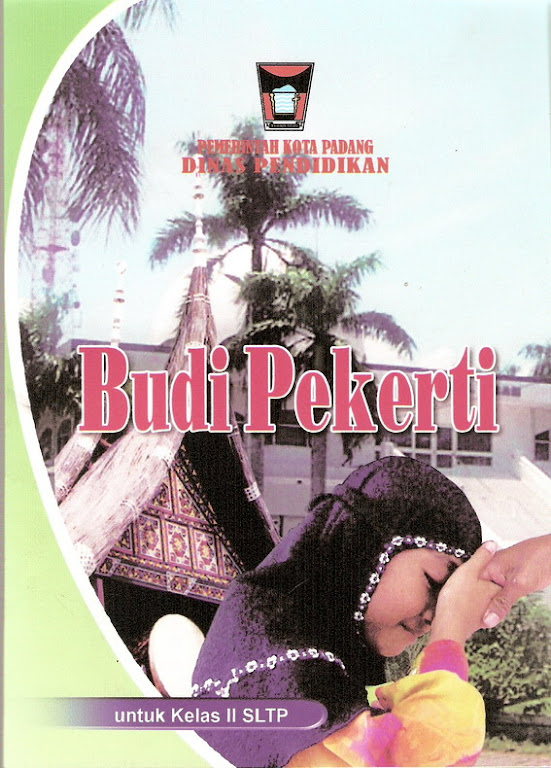



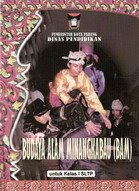

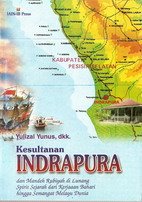



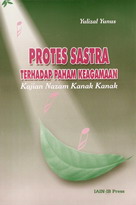
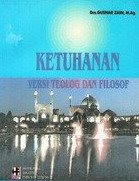




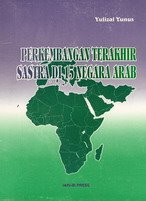











Tidak ada komentar:
Posting Komentar